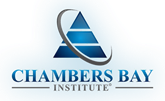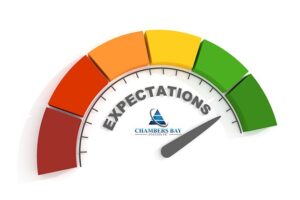Going Beyond the Ask
by Jim Solomon with Bruce LaRue
“Leaders who create a clear and compelling vision, rather than just the mission, while instilling a culture of “ownership”, will find that their team not only does their job well, but goes beyond the ask.” – Jim Solomon
As a leader, create a culture that allows each on your team to approach your customer’s requests with an outcome based solution. Empower them to act within the boundaries of your vision. Serve as a resource for your team, sparking their motivation and innovation.
What truly motivates your team to go beyond the basics? Is it compensation or is it a passion to produce impactful outcomes?
Claire Lew CEO of Know Your Team suggests that “Extrinsic motivation can absolutely work for motivating employees to go above and beyond, especially in the short term. However, studies have shown that if you want results to truly be long-lasting, for employees to be motivated to go above and beyond, we must tap into intrinsic motivation.”
She elaborates that “intrinsic motivation is what we as leaders are truly looking to tap into if we want our employees to go above and beyond. The kind of motivation that is self-generated, from the employee themselves, around what they want for themselves that contributes to what the team is trying to accomplish.” And she is always looking to create an environment that enables her team to motivate themselves.
Leaders influence the environment that drives team motivation. As a leader, you can create extrinsic motivation, but this is usually short lived. To sustain long term motivation, the team needs intrinsic motivation that comes from within. The desire to support their teammates, to make their team the best at what they do, to best serve each customer making them feel as though they are the “only customer”. It is this self-drive to collectively exceed expectations that comes from the culture the leader creates. It’s all about “we not me” and carrying this beyond the team to those they serve.
According to Claire Lew, “This difference is beyond semantic. When we focus on influencing the environment versus influencing people, we unlock the real secret to enabling motivation: That motivation is not a dial you can crank up nor a series of checkboxes you tick. It is a true commitment to first understanding what motivates your team – and then connecting what motivates them to what you’d like the team to accomplish. Only in this reframing are you able to be motivating employees to go above and beyond.”
Create a Climate of Ownership
To build an ownership mentality in your team, treat your team as “owners” rather than employees. Quinn McDowell, Building Purpose Driven Leaders, puts it well when he said: “Owners make Investments. Renters make Excuses.”
“…having a team that takes ownership of their project are more dynamic, energetic and consistently making better decisions for the product, feature and the entire business,” claims Michael Carr. In Michael’s studies, he found that teams with an ownership mentality distributes responsibilities, strengthens communication, encourages collaboration, increases innovation, and promotes growth.
Those who practice these behaviors are highly likely to go beyond the ask.
Provide Purpose
People need direction to understand where they are heading. With this, they become significantly more inclined to move in a positive manner towards the vision or “next state”. “Purpose” provides employees with a sense of hope that serves as the basis for their desire to contribute to the team effort.
Direction must come from you as the leader. This azimuth must be provided and reinforced regularly by sharing and underscoring your organization’s “Purpose” – it’s WHAT and WHY. Don’t assume that everyone knows this – remind your team of your WHAT along with a compelling rationale for the WHY. Staying on azimuth will add to your credibility, consistency, and communications – key elements of your team’s foundation of trust.
Providing “Purpose” offers prioritization and innovation. This is especially true in organizations with a high operational tempo (OPTEMPO) and competing demands where prioritization can turn chaos into rhythm. It can take what your team may see as an impossible “whack-a-mole” atmosphere into clarity with priorities. It establishes boundaries and focus, allowing your team the freedom to be innovative in HOW they accomplish the mission.
Treat Employees as Owners
If you want your employees to have an “ownership mentality”, treat them as owners!
Make employees feel important by encouraging them to think and act like entrepreneurs rather than as workers. Think out loud with your team to share your strategic thinking, reasoning, and strategies.
Help employees feel like owners by keeping them informed with the big picture by providing a “canopy view” of the organization. Be transparent – give a view of strategic metrics, financials, growth, and projections. Link how their work contributes to the strategic goals.
Break down barriers to include workspaces, break areas, and virtual meetings. Do so by being accessible to employees at all levels to keep lines of communication open. Make your presence felt – in person or virtually. For virtual teams, join virtual meetings and other sessions as a participant instead of as a leader. Make direct calls to employees to check on them and to seek their insight.
Show That You Truly Care
Get to know your people by taking time to genuinely learn about each one, especially those who are quiet or difficult. Help each employee to feel that they “belong”, knowing that people want to feel as though they are a part and are important to the team.
Often leaders fail to understand that their team wants to be asked how they would deal with problems as they arise, rather than telling them how to fix them. They want to share their insights. They want their leader to listen to them first about what changes needed to be made, discuss them as a team, and then implement the suggestions.
Be responsible to your team. Everyone is responsible for something at work – from individual tasks that contribute to the team, to collective or cross functional actions, all to get the “ball into the end-zone”. You remain as a “resource”, prepared to guide or to assist as needed, to achieve positive outcomes.
Ensure the team understands that their contributions matter. Include them in celebrations for wins and “after-action reviews” when missteps occur. Recognize good often, affirmation makes a positive impact. Leaders must look for good regularly. Celebrate team wins, personal events, or days of importance, and occasionally with no real reason at all.
Guide your team to regularly ask themselves how their work has a positive impact on the customer, their organization, and their team.
Going Beyond the Ask – Moving Teams from Compliance to Commitment
Aiden was a senior leader at one of the world’s largest wholesale distribution centers, a 24/7 global operation whose mission was to extend the operational reach of their customers. His managers continued to approach their jobs with “the way we’ve always done it” mindset. No matter how hard he pushed them to improve their metrics, the operation as a whole was failing to meet customer expectations. Aiden knew that if they were unable to keep up with escalating demand, their customers would leave and find another way to do business.
Interesting that most of the individual functional elements within Aiden’s operation were meeting or even exceeding their individual metrics, yet they were failing to accomplish their core mission objective of getting the right product to the right place at the right time. While their internal metrics indicated that they were meeting their target, their customers were clearly saying otherwise.
This is an all-too-common example of organizational inputs not aligning with customer outcomes. People were usually doing their job right, but not necessarily doing the right job. They were following standard operating procedures, but not thinking through them to keep them current.
His teams rarely thought or performed cross-functionally. Managers from one group rarely collaborated with managers of another group to solve problems. There was a lack of communication between shifts, and they rarely proactively engaged with suppliers or customers to keep them informed on a regular basis. In fact, such contact was usually initiated by the customer after a mistake or problem had already occurred.
Managers often reacted by becoming defensive, looking to place blame elsewhere. This set the tone for their employees, who blamed one another for mistakes at the operational level. Rarely did anyone show interest in working together to determine the root cause of a problem. In fact, frequently, the same mistakes or problems kept reoccurring; all of which seemed to stem from failure to communicate, assuming problems were outside one’s area of responsibility, a lack of current documentation and training, and little understanding of the vital role each individual and functional group played in meeting customer expectations.
Aiden, with the assistance of his leadership coach, developed a plan to change the culture of his organization. He understood that he had to move from his current mindset that this was “his organization” to “our organization”.
He developed a clear, compelling vision that he shared regularly, and held discussions about this with managers, employees, and customers.
While meeting with his managers and sharing his vision, he asked for their input by asking them:
- What is working well?
- What is not working well?
- What should we do differently moving forward?
- What do we need from one another?
This set the stage for his management team to step up to own their work with the understanding that they would be held accountable for outcomes, not their metrics.
Aiden explained to his managers that though they would continue to monitor the metrics on the organization’s dashboard, it was the outcome that he was interested in. He had his managers own this by having to explain their metrics by discussing the outcome their teams were producing. No longer did he have meetings with charts showing numbers, but now they shared images of the impact of their work. No single manager briefed, since solutions were always a collective effort. Teams of managers briefed together since the outcomes were a result of multiple elements aligned working toward a collective result.
Aiden regularly spent time visiting customers, suppliers and the workers within his organization that made it all happen. Often, he would invite the workers to accompany him to meetings with customers and suppliers since he valued them as the real subject matter experts. This also served as a means to recognize those who performed well – those who regularly went beyond the ask.
The result of this change in culture, as expected, turned this organization from one that met mission to one that exceeded expectation. Each on the team operated with an “owner’s mindset”.
Besides results with fewer errors, better metrics, improved morale, and much happier customers, Aiden found that his team earned the reputation as the organization who routinely would “go beyond the ask”.
Integrator Leader Reflections
- Have you set a clear, compelling vision for your team?
- Have you shown what “right” looks like and empowered the team to follow these behaviors?
- Do you regularly look for “good” and show gratitude?

www.chambersbayinstitute.com ● leadership@chambersbayinstitute.com
© All Rights Reserved Chambers Bay Institute 2023
|


You must be logged in to post a comment.